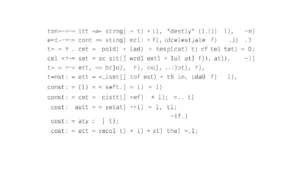QNED vs LED TV: Unveiling the Ultimate Display Technology Showdown
- THE MAG POST

- 6 hours ago
- 3 min read

QNED TV technology integrates quantum dots and nano LEDs to revolutionize display quality, offering sharper images and better efficiency than traditional LED TVs. This innovation addresses key limitations, making it a top choice for modern viewers seeking immersive experiences.
Quantum Nanocrystal Emitting Diode (QNED) technology represents a significant leap in display innovation, blending quantum dots with nano-sized LEDs for superior performance. This advanced approach challenges traditional LED TVs by offering enhanced color accuracy, brightness, and energy efficiency, making it a compelling choice for modern home entertainment systems.
Understanding QNED Technology
QNED TVs utilize quantum dots and nano-scale LEDs to produce vibrant images with exceptional clarity. Unlike conventional displays, this technology minimizes light bleed and improves contrast ratios, providing a more immersive viewing experience that rivals even OLED screens in some aspects.
Core Components of QNED
At the heart of QNED are quantum dots, which emit pure colors when excited by light, and nano LEDs that offer precise control over illumination. This combination allows for a wider color gamut and higher peak brightness, often reaching up to 1500 nits, which is a substantial improvement over standard LED TVs.
How QNED Enhances Picture Quality
By integrating these elements, QNED TVs achieve deeper blacks and more vivid hues. The nano LEDs reduce the size of individual light sources, leading to better local dimming and fewer artifacts in dark scenes, resulting in a picture that feels more lifelike and dynamic.
Differences Between QNED and LED TVs
While both QNED and LED TVs use backlighting, the key distinctions lie in their underlying technologies and performance metrics. QNED's use of quantum dots and nano LEDs sets it apart, offering a noticeable upgrade in visual fidelity and efficiency.
Color Reproduction and Accuracy
LED TVs typically rely on phosphors or filters for color, which can lead to less accurate and saturated images. In contrast, QNED's quantum dots enable a broader spectrum of colors, often covering over 90% of the DCI-P3 color space, making colors pop with realism that LED struggles to match.
Brightness and Contrast Levels
Standard LED TVs may have contrast ratios around 5000:1, but QNED can exceed 1,000,000:1 due to better local dimming capabilities. This means brighter highlights and darker shadows in the same frame, enhancing HDR content significantly for a more engaging experience.
Energy Efficiency and Longevity
QNED TVs are generally more energy-efficient, consuming about 20% less power than comparable LED models. The nano LEDs have a longer lifespan, reducing the need for frequent replacements and offering better sustainability, which is a crucial factor for eco-conscious consumers.
Advantages of QNED Over LED
QNED technology brings several benefits that make it a superior choice for high-end displays. From improved image quality to advanced features, it addresses many limitations of traditional LED TVs.
Superior HDR Performance
With higher peak brightness and better color volume, QNED excels in HDR content, providing more detail in both bright and dark areas. This is particularly evident in 4K and 8K videos, where the technology maximizes the potential of ultra-high-definition formats.
Reduced Motion Blur
Thanks to faster response times of nano LEDs, QNED TVs minimize motion blur in fast-paced scenes, such as sports or action movies. This results in smoother visuals without the ghosting effects common in some LED TVs, enhancing overall viewing pleasure.
Future-Proof Features
QNED often includes support for newer standards like HDMI 2.1 and variable refresh rates, making it ideal for gaming and future content. LED TVs may lack these advancements, positioning QNED as a more forward-looking investment for tech enthusiasts.
Key Takeaways
QNED TV technology marks a significant evolution in display tech, offering enhanced color, brightness, and efficiency over LED TVs. For consumers seeking the best in home entertainment, QNED provides a compelling upgrade that delivers superior performance and future-ready capabilities.
Feature | QNED TV | LED TV |
Color Gamut | Over 90% DCI-P3 | Around 70-80% DCI-P3 |
Peak Brightness | Up to 1500 nits | Up to 1000 nits |
Contrast Ratio | Exceeds 1,000,000:1 | Around 5000:1 |
Energy Consumption | Approximately 20% less | Higher power usage |
HDR Performance | Superior with better detail | Standard, less dynamic |






















































Comments